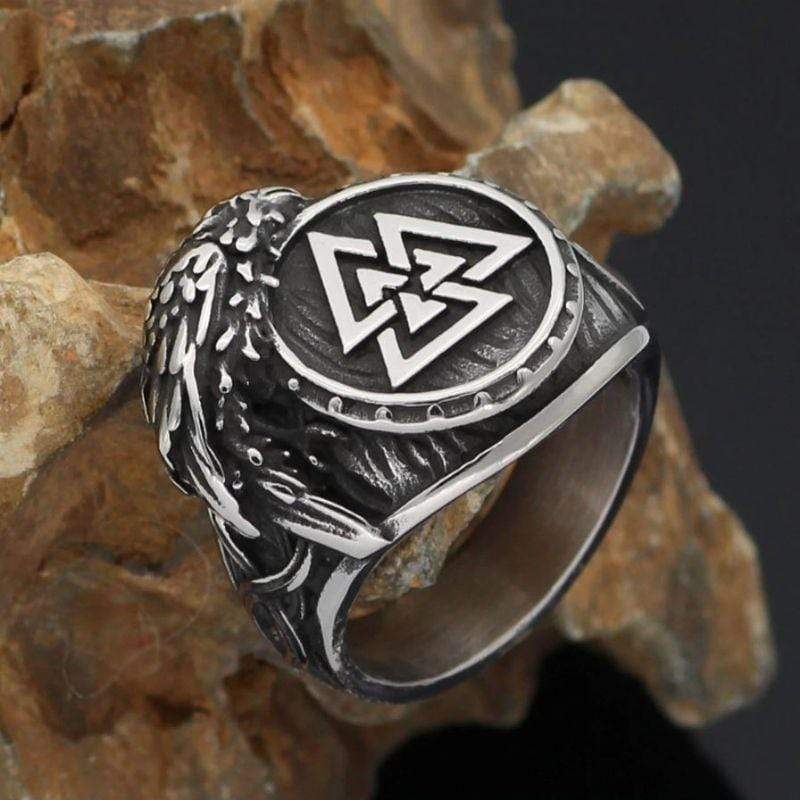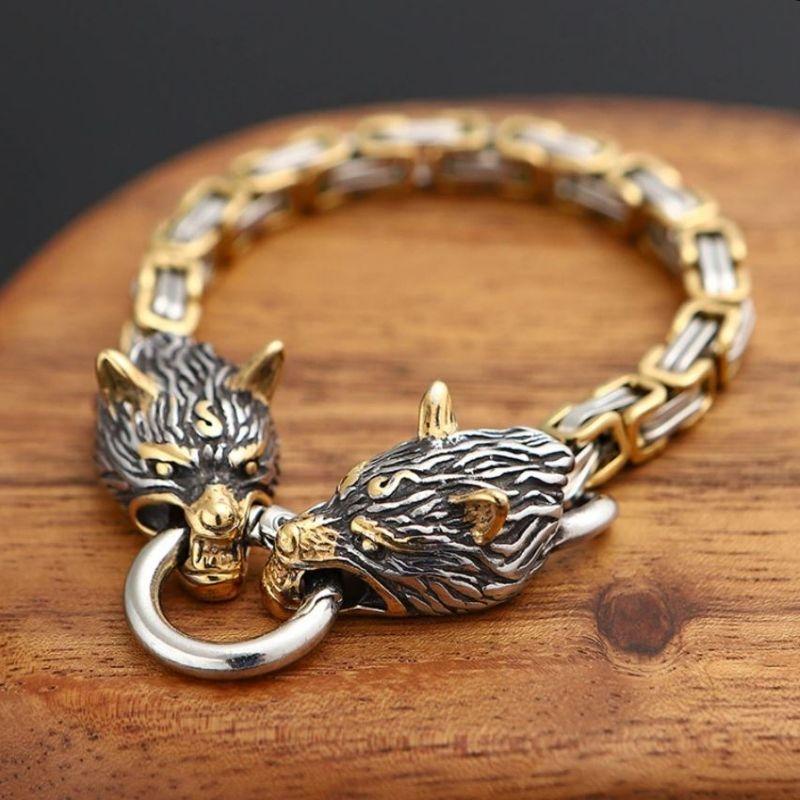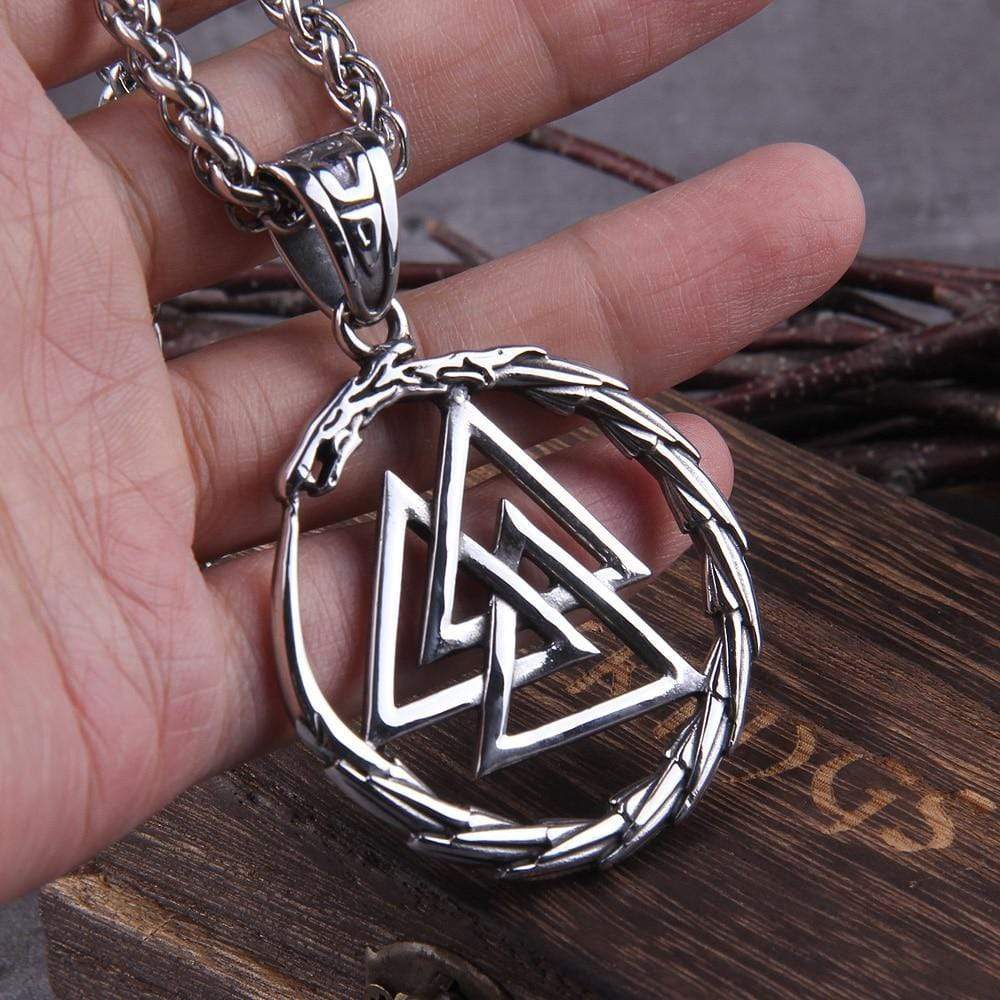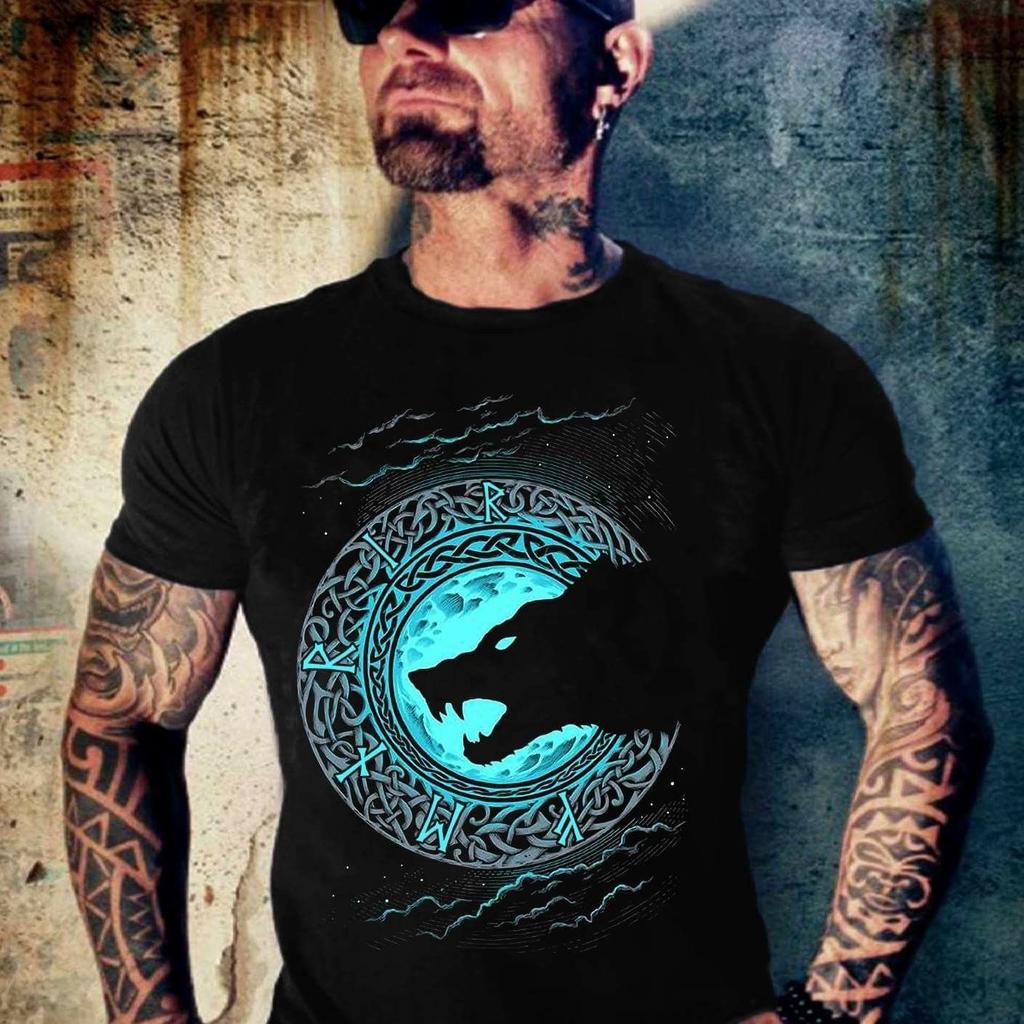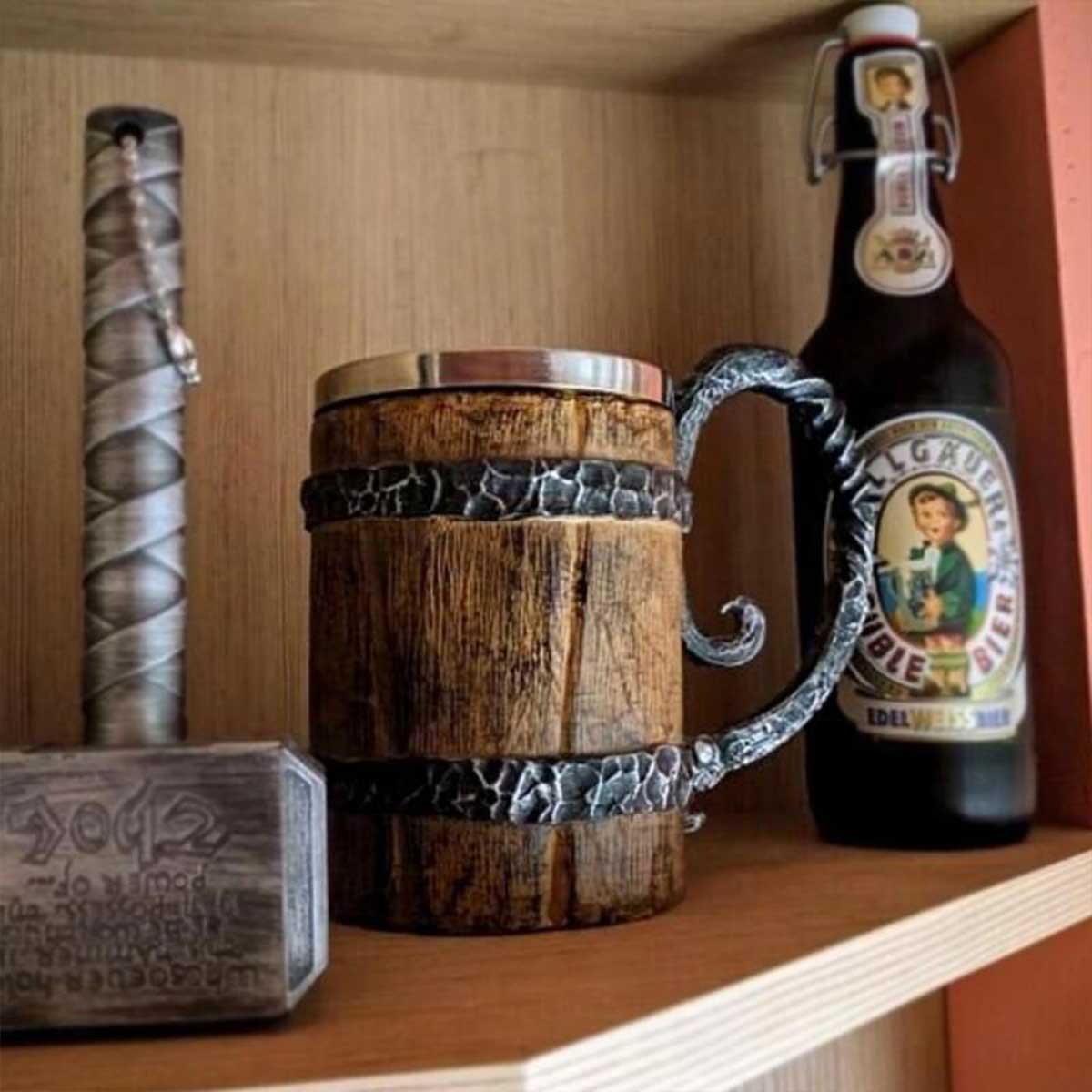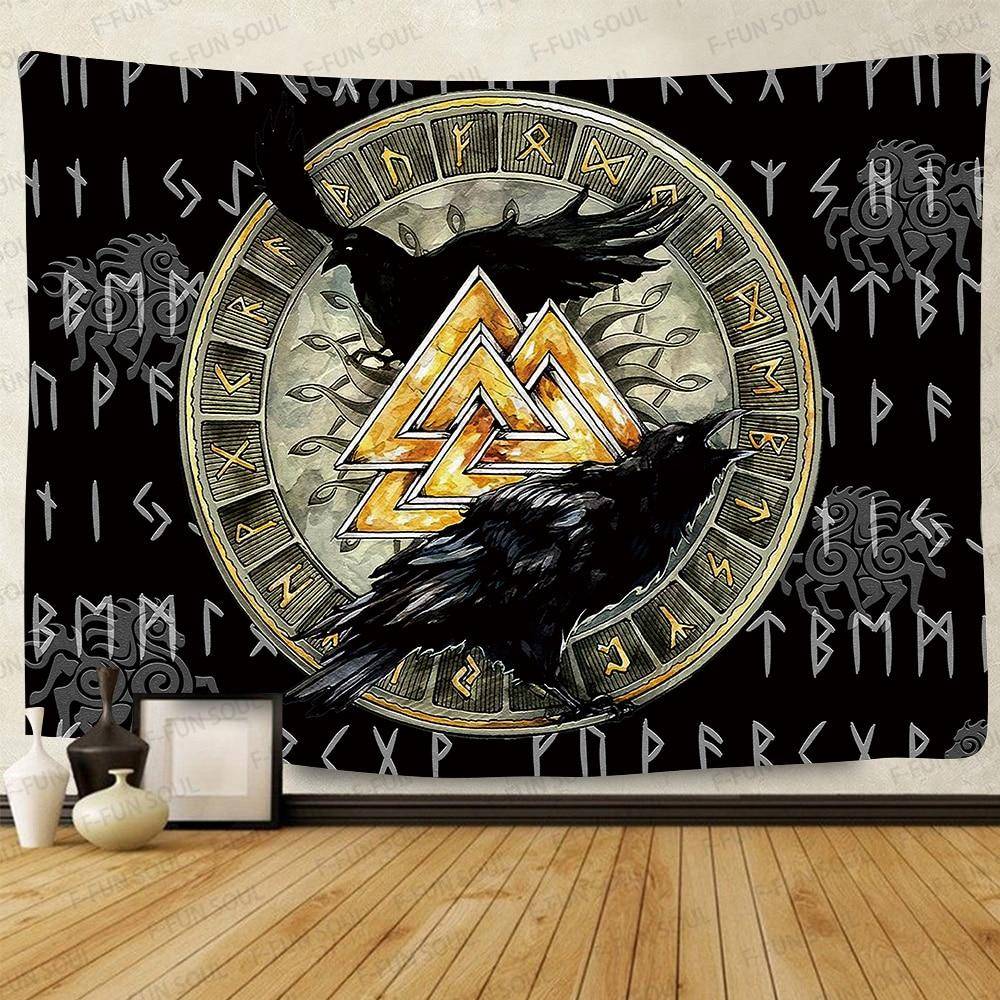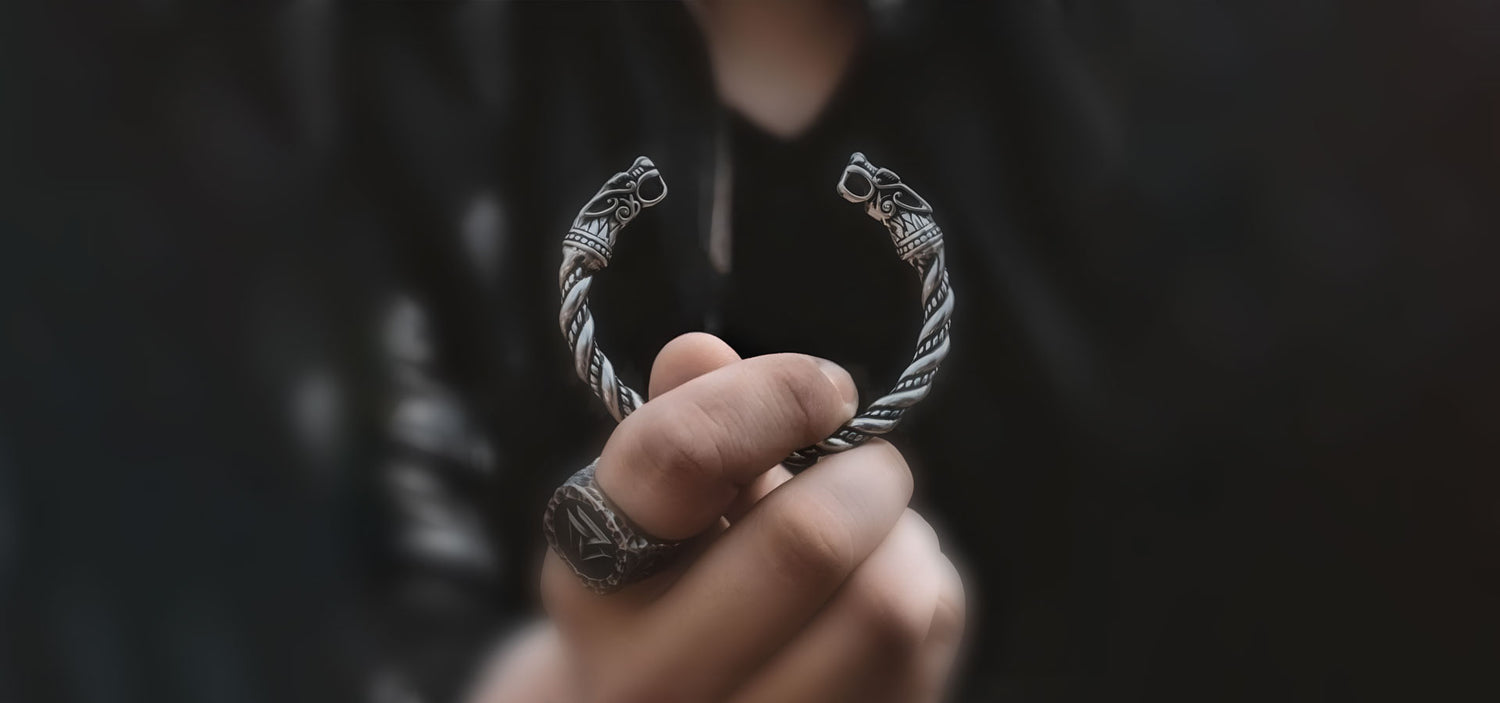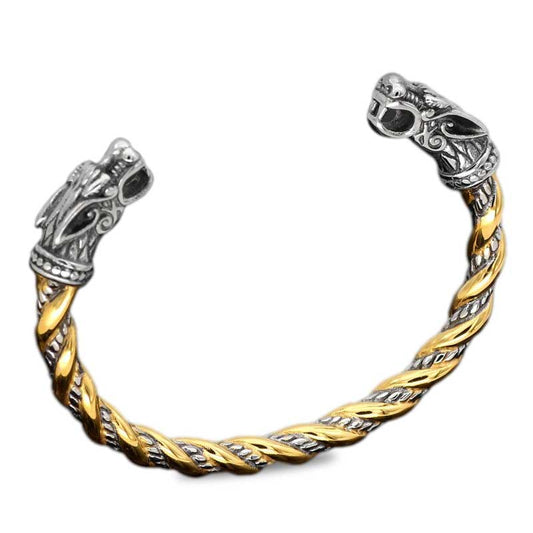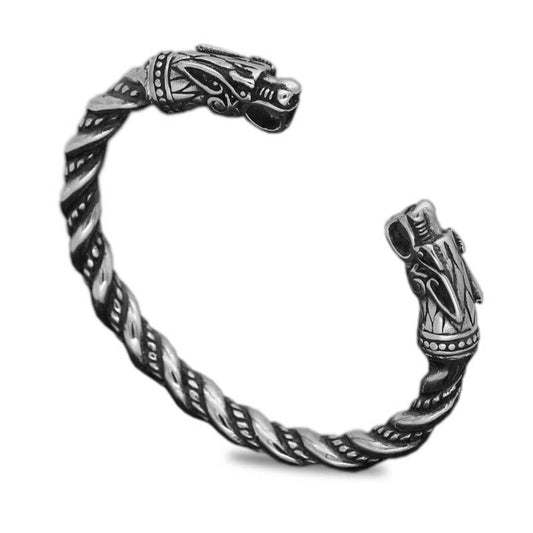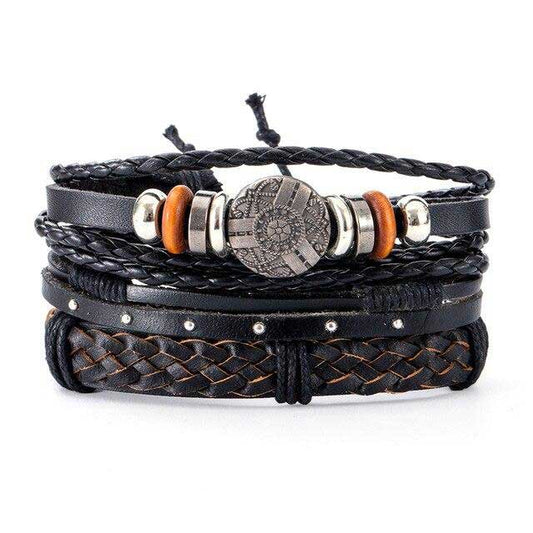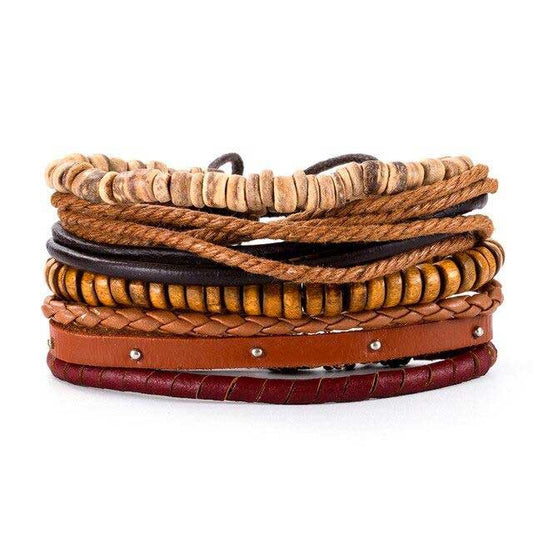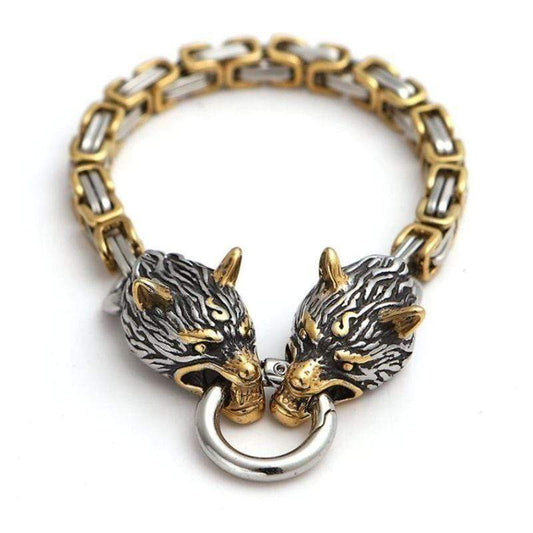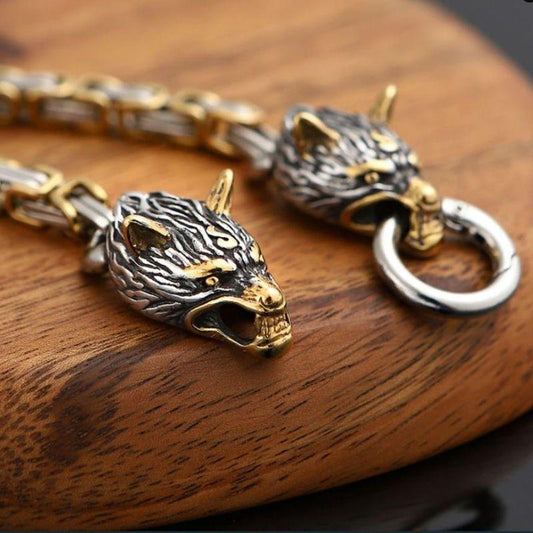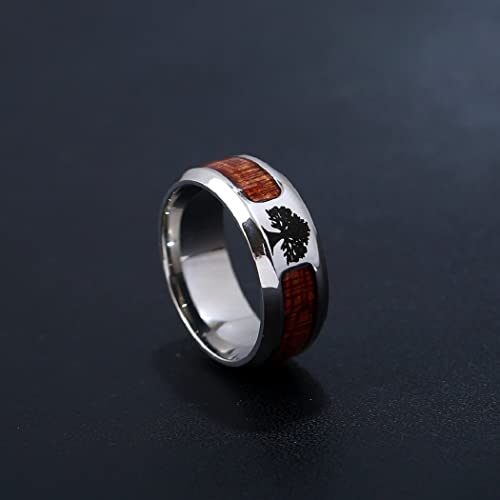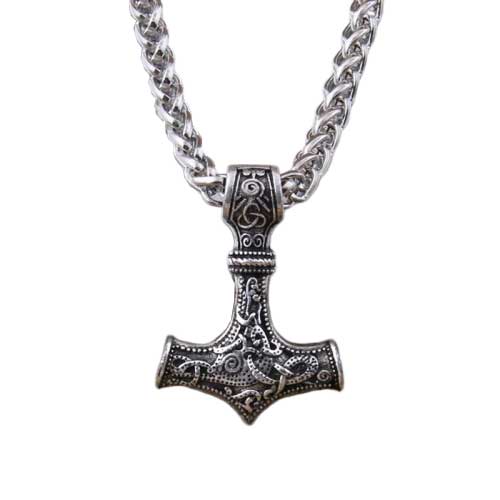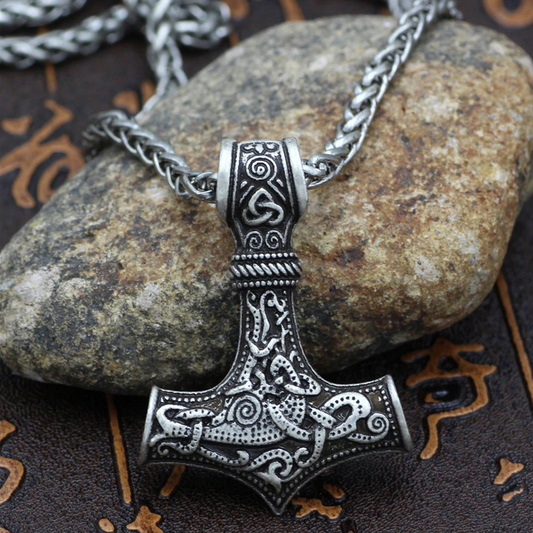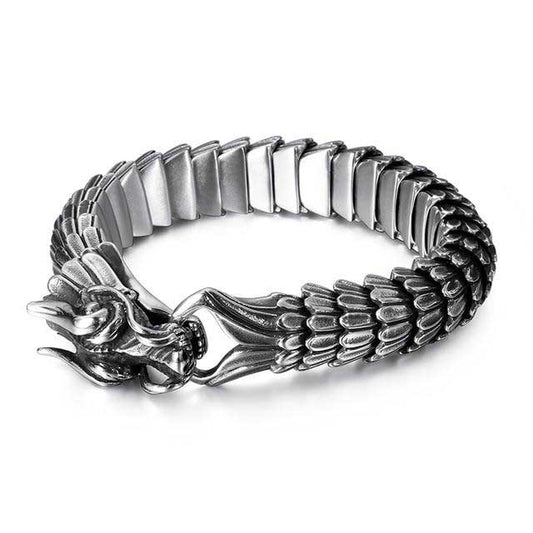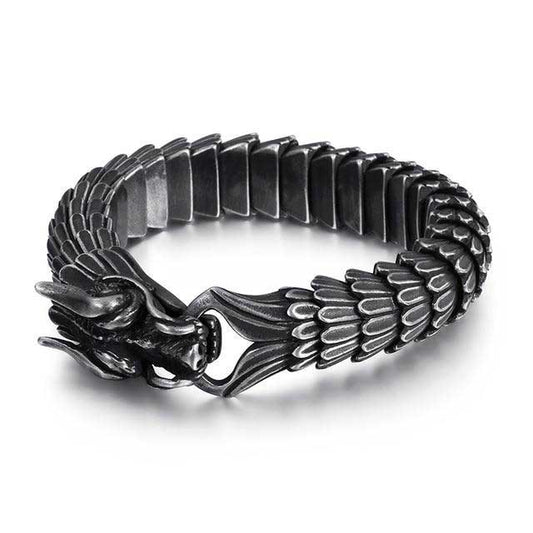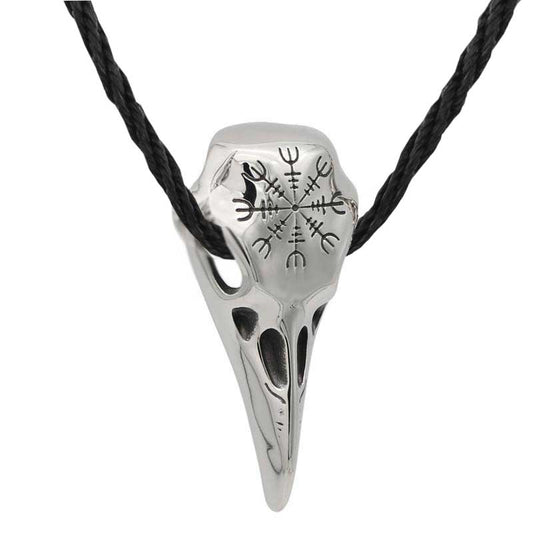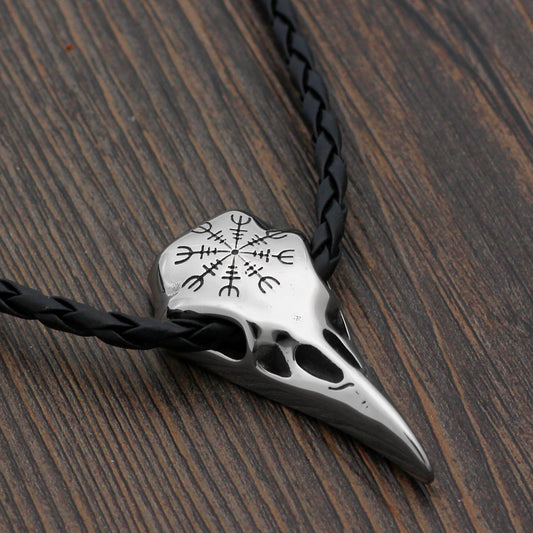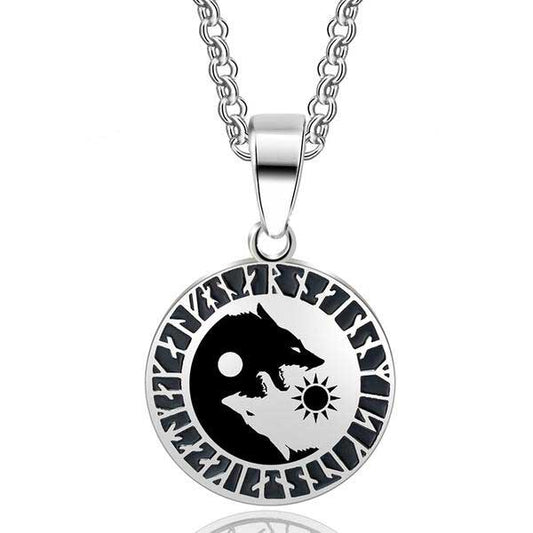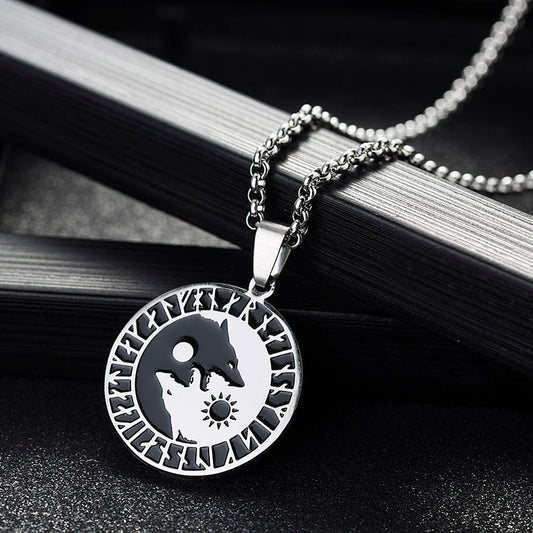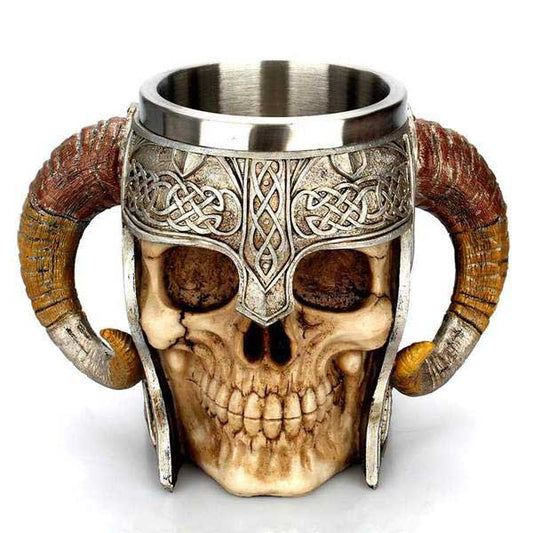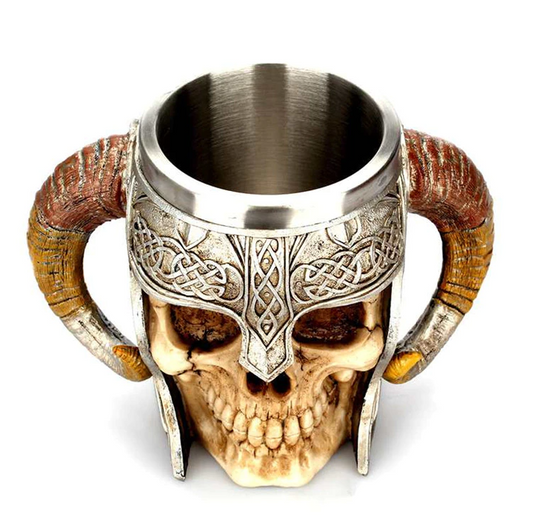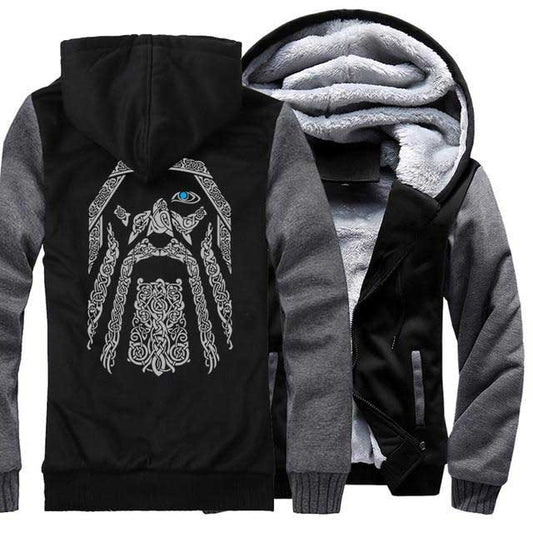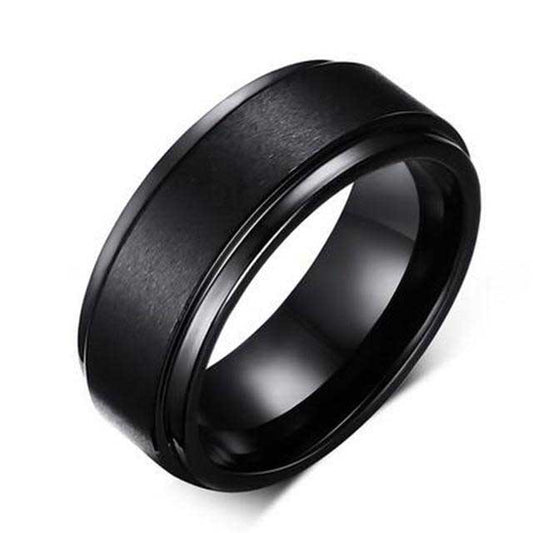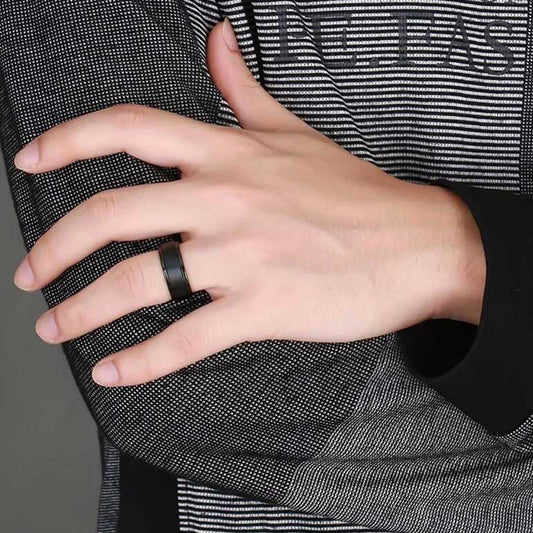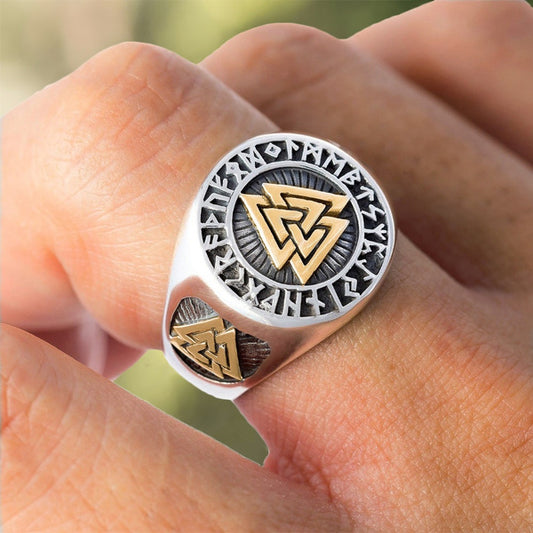Viking tattoos, much more than simple designs, were loaded with deep meaning:
- Protection and luck : Considered spiritual acts
- Bravery and Honor : Symbols of Courage for Warriors
- Strength and Power : Assertion of one's power
- Devotion : Connection to Viking gods and culture
Main symbols and their meanings:
- Aegishjalmur : Protection and Courage in Battle
- Valknut : Link to Odin and the afterlife
- Yggdrasil : Cosmic Knowledge and Power
- Mjölnir (Thor's hammer): Divine strength and protection
Today, these tattoos remain popular, blending tradition and modernity. They allow one to connect with Nordic heritage while expressing one's own identity.
“A Viking tattoo is not just a design, it is a personal statement about your origins and values.” - Certified Tattoo Studios
Before getting a tattoo, make sure you understand the meaning of each symbol for an authentic and meaningful result.
Related YouTube video
History and Evidence
Viking tattoos are a subject that makes people dream. But what is it really? Let's see what the facts say.
Archaeological excavations: empty-handed
No luck on the archaeologists' side. No direct evidence of Viking tattoos to date. The reason? The Nordic climate doesn't like human skin. Result: no tattooed Viking mummies to get your teeth into.
But all is not lost. The Vikings' neighbors give us some clues:
The Scythians, nomads from the East, left tattooed mummies. The Saami, in northern Scandinavia, were also fans of tattoos.
These findings suggest that tattooing was common in the region during the Viking Age.
The writings: a glimmer of hope
Fortunately, there are written accounts. The best known? That of Ahmad Ibn Fadlan, an Arab diplomat of the 10th century. In 921, he crossed paths with the Rus, descendants of the Swedish Vikings, and wrote:
"Each of them has, on their necks, trees, figures and other dark green designs tattooed."
Wow! Tattoos everywhere, with intricate designs. Another traveler, Ibn Yaqub, also speaks of tattoos among the Danish Vikings.
But be careful: the Arabic word for "tattoo" can also mean makeup. So be careful.
How did they do it?
Without concrete evidence, we are reduced to suppositions. Here is what we imagine:
1. The tools
Bone or metal needles, probably.
2. Ink
Natural pigments: wood ash for dark blue, plant extracts...
3. The technique
Perhaps "hand-tapping" or "hand-poking", as in other cultures.
The Vikings were good with their hands. They probably created effective tattooing tools. And for the pain? Anesthetic plants, perhaps. Clever, right?
In short, even if we don't have direct proof, everything suggests that the Vikings tattooed themselves. And these marks must have meant a lot to them.
Common symbols and their meanings
Viking tattoos are not just drawings. Each symbol tells a story related to Norse mythology. Let's see the most popular symbols and their hidden meaning.
Yggdrasil: The World Tree
Yggdrasil is the heart of Norse cosmology. This giant ash tree is not just a tree:
It connects the nine worlds of Viking mythology, symbolizes the cycle of life, death and rebirth, and embodies universal wisdom.
A Yggdrasil tattoo is like wearing the universe on your skin. It is a reminder of our connection with everything around us.
"The symbol of Yggdrasil represented unparalleled power, profound wisdom and mystical divinity." - BaviPower
The Valknut: The Knot of Fallen Warriors
The Valknut, with its three interlocking triangles, is a powerful symbol:
It is linked to Odin, represents the passage to the afterlife for warriors, and symbolizes the cycle of life, death and rebirth.
Wearing a Valknut tattoo is a way of showing courage in the face of death and a connection to the divine. It is a symbol of strength.
"The Valknut sign indicated that Odin welcomed warriors to come and dwell in Valhalla." - BaviPower
Mjölnir: Thor's hammer
Mjölnir, Thor's hammer, is more than a weapon:
It is a symbol of protection and strength, it represents power over thunder, and was used to bless marriages and births.
A Mjölnir tattoo is like having a magical shield on your skin. It is a call to inner strength.
"The hammer Mjölnir was the symbol of Thor - the most powerful and benevolent god." - BaviPower
These symbols were true talismans for the Vikings. Today, they fascinate those who choose them as tattoos. Whether to connect with their Nordic roots or to draw on the strength of these symbols, each Viking tattoo has its own story.
At Ervald , our Viking jewelry store, we offer pendants and bracelets inspired by these symbols. Each piece allows you to proudly wear your Nordic heritage, just as our ancestors did with their tattoos.
Protection and Spiritual Meanings
Viking tattoos? Much more than just ink on the skin. It was their spiritual armor, their connection with the gods. Let's see how these designs gave courage to warriors and connected them to the invisible world.
Warrior Symbols
For a Viking, his tattoo was worth more than a medal. It was his resume as a hero, etched into his flesh.
Among the favorite symbols:
- The Valknut: Three intertwined triangles for Odin. The message? "Ready to die in battle."
- Thor's Hammer: A portable magical shield. Viking tombs are full of them!
- The Ægishjálmr: An eight-pointed star to scare the enemy. Like a superpower on the skin.
These tattoos were their dose of courage before the battle. Their invisible armor.
Magical beliefs
The Vikings didn't mess around with the magic of symbols. Getting a tattoo was like casting a protective spell on yourself.
Some star runes:
- Algiz: A shield against evil.
- Eihwaz: The roots of the universe on your skin.
- Thurisaz: To say "Don't even be afraid!" to problems.
These symbols were found everywhere: jewelry, shields, clothes. It was their way of putting destiny on their side.
"The Vikings believed that these symbols had magical powers to help them in life."
This belief shows how much tattoos meant to them. They weren't just decoration, they were serious!
Today, choosing a Viking tattoo is like wearing a piece of legend. It's connecting to beliefs that are a thousand years old.
So, the next time you see a Viking tattoo, tell yourself that maybe it's a modern warrior with his magical armor!
sbb-itb-2713a32
Main types of patterns
Viking tattoos are not just drawings. Each design tells a story rooted in Norse mythology. Let’s take a look at the most common designs and their meanings.
Types of patterns
The Vikings loved intricate designs. Their tattoos often showed this passion for intertwined shapes and meaningful symbols.
The interlacing and knotting represented the interconnectedness of everything. It was like wearing the universe on your skin. Every loop, every intersection had meaning.
Runes were more than an alphabet. They were seen as magical. A runic tattoo was like carving a protective spell. The Algiz rune, for example, was seen as a shield against evil.
Some symbols had deep spiritual meaning. The Valknut, with its three intertwined triangles, was linked to Odin and the afterlife. The Vegvisir, a kind of Viking compass, was believed to provide guidance in the storms of life.
"The Vegvisir was seen as a magical guide for travelers. It was meant to help its wearer never get lost, even in the worst conditions." - Viking Heritage Store
Animal motifs
Animals were at the heart of Norse mythology. To tattoo them was to appropriate their qualities.
The raven, linked to Odin, symbolized wisdom and clairvoyance. It was like having a direct link with the god of war and knowledge.
The wolf represented loyalty and ferocity. It was linked to Fenrir, the giant wolf of mythology. Getting a wolf tattoo was a sign of strength and warrior spirit.
The dragon showed power and protection. It was seen as a force of nature. A dragon tattoo said that one was ready to face anything.
“These tattoos tell stories of personal growth, strength, and spiritual connection.” - Author Unknown, Tales of Valhalla
The Vikings used these designs to decorate themselves, but also to tell their story. Each tattoo was a chapter of their life, engraved in the skin.
Today, understanding these symbols allows you to create meaningful and authentic Viking tattoos. Whether you choose a raven for its wisdom, a wolf for its loyalty, or a dragon for its strength, your tattoo will be a reminder of your connection to these ancient traditions.
Viking Tattoos Today
Viking tattoos are all the rage. Why? They are more than just drawings. They allow you to express your identity and values, while celebrating a fascinating ancestral culture.
From past to present
Modern Viking tattoos take inspiration from traditional designs, but with a modern twist. Here's what's changed:
- Modern techniques allow for finer details.
- The color palette has expanded beyond dark green and blue.
- Tattoos are often larger and more intricate.
The TV series "Vikings" played a key role in this evolution. Ragnar Lothbrok's tattoos, evolving from a simple raven to elaborate designs, influenced the modern aesthetic of Viking tattoos.
The Viking spirit preserved
Despite these changes, many tattoo artists remain faithful to the Viking spirit. How do they do it?
1. Dive into history
Serious tattoo artists study Norse history and mythology. Some even collaborate with historians to ensure the authenticity of their designs.
2. Timeless symbols
The most requested symbols remain anchored in tradition:
- The Vegvisir (Viking compass)
- Mjölnir (Thor's hammer)
- The Yggdrasil (tree of life)
These symbols are valued for their deeper meaning. Mjölnir, for example, often represents inner strength and resilience.
3. Personal touch
Artists are adapting these ancient symbols to modern tastes. Rodrigo Casco, a specialized tattoo artist, explains:
"The appeal of Viking tattoos comes from the mystery surrounding the rich but little-known history of Norse culture."
This approach keeps the Viking spirit alive, while making it relevant today.
Whether you choose a Viking tattoo to honor your ancestors, express your strength, or for its aesthetic, the important thing is to understand its meaning. As InkMatch says:
“This tattoo will show your respect for these people, their courage and strength.”
Before you get started, learn about the history of each symbol. It will make your tattoo more personal and meaningful.
Conclusion
Viking tattoos aren't just a fad that's passing. They're a strong connection to an ancient culture full of symbolism and meaning. Here's what to keep in mind:
These tattoos are like a bridge between yesterday and today. They allow you to connect to your Nordic roots while showing who you really are. Some key points:
1. The meaning behind each symbol
Every Viking symbol tells a story. Take the Vegvisir for example. The Viking Heritage Store explains:
"The Vegvisir was like a magical GPS for travelers. It was supposed to keep its owner from getting lost, even in the thickest fog."
2. A way of expressing oneself
These tattoos aren't just for show. Often, they show what's really important to the person. As Certified Tattoo Studios says:
"A tattoo is not just a drawing on the skin. It is a personal statement that can speak about your origins, what is important to you or your dreams."
3. A mix of old and new
Today's Viking tattoos are a mix between tradition and modernity. It gives unique, truly personal designs.
4. A global community
The craze for these tattoos has created a real global community. It shows that these symbols speak to people, no matter where they come from.
5. Respect and responsibility
It's super important to understand what the symbols mean before getting them tattooed. It's a matter of respect for Viking culture and to avoid misunderstandings.
Ultimately, Viking tattoos are more than just a trend. They’re a powerful way to connect with a rich history, show your inner strength, and be a part of a tradition that values both the individual and the group. Whether you have Viking blood or are just fascinated by the culture, a Viking tattoo can be a great way to honor that heritage while telling your own story.
FAQs
What does a Viking tattoo symbolize?
A Viking tattoo is more than just a design on your skin. Here's what it represents:
Protection and luck: Tattooing was seen as a spiritual act. The Vikings believed that it protected and brought good luck.
Bravery and Honor: Warriors loved these tattoos. For them, it was a way to show their courage and honor in battle.
Power and Strength: Wearing a Viking tattoo was like saying, “I am strong and powerful.”
Devotion: These tattoos showed devotion to gods, family, and the Viking way of life.
"Tattooing had a spiritual dimension. The Vikings believed it brought protection and good luck." - Certified Tattoo Studios
What are the meanings of Viking tattoos?
Viking tattoos had many different meanings:
The Aegishjalmur, or "Helmet of Terror", was for protection and courage in battle.
The Valknut was linked to Odin. It represented the hope of going to Valhalla after a battle.
Yggdrasil symbolized deep knowledge and absolute power.
Thor's hammer, Mjölnir, was a symbol of strength and divine protection.
What is the traditional Nordic tattoo?
Traditional Nordic tattoos are quite a story! Here are the most famous ones:
The Aegishjalmur (Helm of Terror) for protection and strength.
The Vegvisir (Viking Compass) to guide travelers and prevent them from getting lost.
Thor's hammer, symbol of protection and divine strength.
The Yggdrasil (World Tree) which represents the link between all living beings.
These symbols were often mixed with intricate interlacing and knotting patterns. Every little detail had its importance.
"The Vikings did not choose their tattoos randomly. They used Nordic symbols of their time." - Viking Heritage Store
Today, people still love these traditional Viking tattoos. It's not just because they look beautiful, but also because of what they represent and their connection to a culture rich in history.
